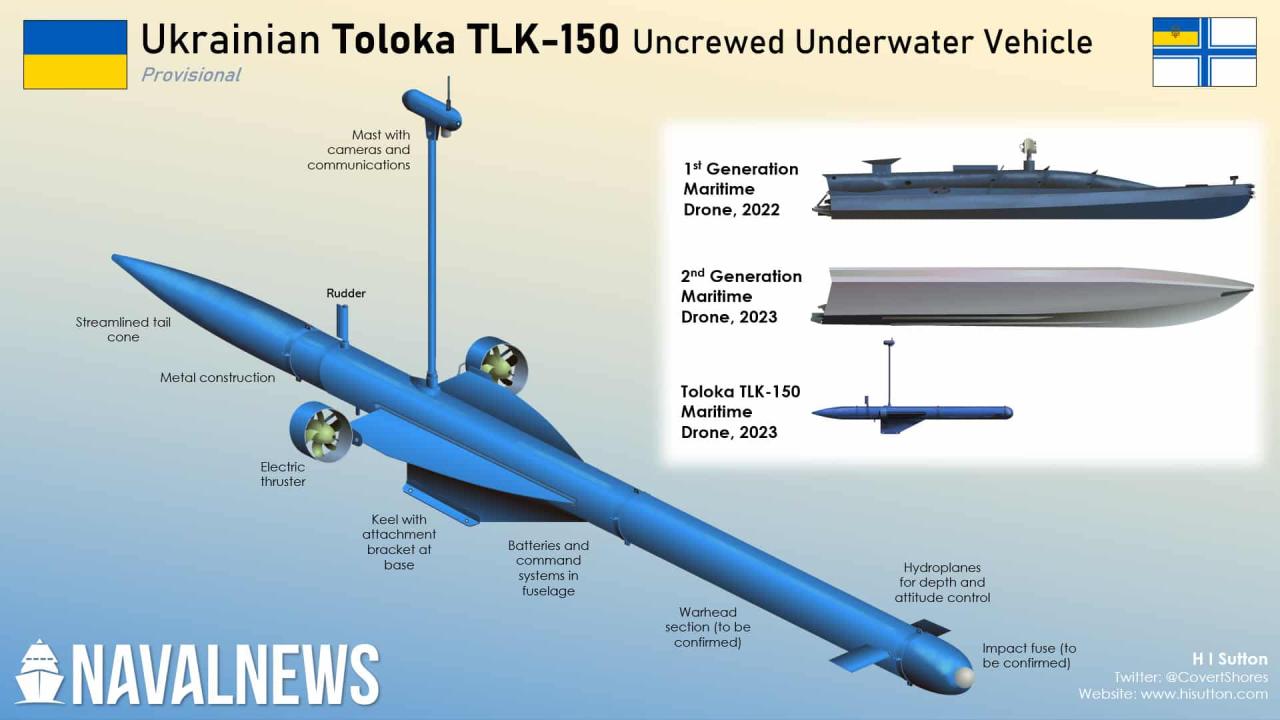Ukrainian sea drones are rapidly changing naval warfare. These unmanned vessels, ranging from small, expendable craft to larger, more sophisticated platforms, are proving surprisingly effective against much larger adversaries. Their low cost, ease of deployment, and surprising capabilities are forcing a rethink of naval strategy, particularly in littoral combat scenarios. This exploration delves into their design, deployment, impact, and the international ramifications of their use.
We’ll examine the technological innovations driving their development, from advanced propulsion systems to sophisticated guidance and targeting technologies. We’ll also explore the tactical strategies employed by the Ukrainian military, highlighting successful operations and analyzing the challenges they face. Finally, we’ll consider the broader international implications of this technology and the responses from various nations.
Ukrainian sea drones are making waves, showcasing impressive autonomous capabilities. Think of their coordinated attacks – it’s a bit like a really, really dangerous drone show, except with explosives. To understand the precision involved in controlling multiple drones, check out this explanation of how drone shows work: how do drone shows work. The same principles of precise programming and GPS coordination apply, though the Ukrainian drones have a far more serious purpose.
Ukrainian Sea Drones: Technological Marvels and Tactical Implications
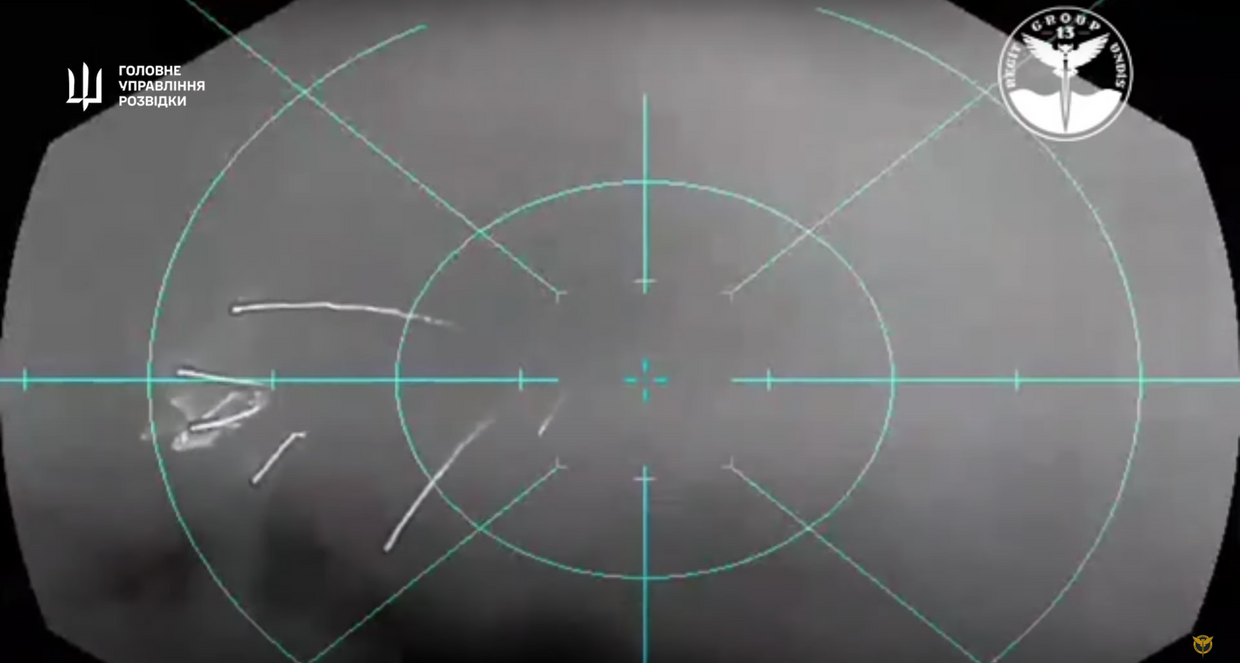
Ukraine’s innovative use of sea drones in the ongoing conflict has significantly impacted naval warfare tactics and the balance of power in the Black Sea region. These unmanned vessels, ranging from small, expendable units to larger, more sophisticated platforms, represent a cost-effective and surprisingly effective tool in asymmetric warfare. This article delves into the technological aspects, operational deployments, impact, and international implications of these remarkable systems.
Technological Aspects of Ukrainian Sea Drones
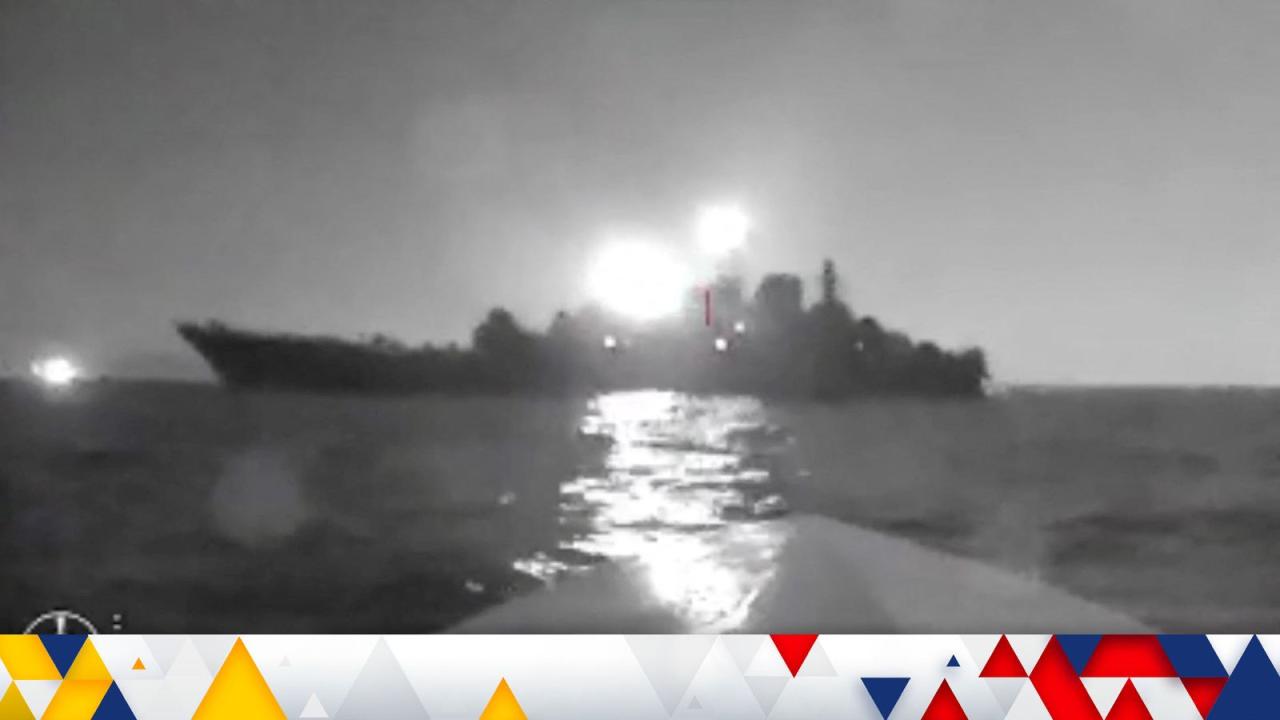
Ukraine employs a variety of sea drones, each tailored to specific mission profiles. These drones vary considerably in size, payload capacity, propulsion systems, and guidance mechanisms. Their development reflects significant advancements in materials science, sensor technology, and autonomy features.
Ukrainian sea drones are proving to be surprisingly effective in the ongoing conflict. Their impact is significant, and while we wait to see what advancements are made, you might be wondering, “Hey, by the way, when is squid game season 3 ?”, because let’s be honest, sometimes you need a break from geopolitical news. Anyway, back to the drones: their innovative design and tactical use are definitely changing naval warfare.
Compared to similar systems fielded by other nations, Ukrainian sea drones often demonstrate a remarkable balance of cost-effectiveness and operational effectiveness. While lacking the extreme range and speed of some larger, more expensive drones from countries like the US or China, their adaptability and ease of deployment make them highly effective in the specific context of the Black Sea conflict.
Key technological advancements driving the success of Ukrainian sea drones include the use of readily available commercial components, adapted for military applications. This approach allows for rapid development cycles and easier maintenance and repair. Miniaturization of sensor technology, allowing for increased payload capacity within smaller drone bodies, has also been crucial.
| Model | Size (approx.) | Payload Capacity (approx.) | Propulsion |
|---|---|---|---|
| Example Drone 1 | Small, boat-like | Small explosive charge | Electric motor |
| Example Drone 2 | Medium, surface vessel | Larger explosive charge or anti-ship mine | Electric motor |
| Example Drone 3 | Larger, semi-submersible | Significant payload, potentially including heavier ordnance | Electric motor/Hybrid |
| Example Drone 4 | Small, submersible | Specialized sensors or small explosive charge | Electric motor |
Operational Deployment and Tactics
Ukraine’s operational strategies for sea drones involve careful target selection, often focusing on high-value assets or vulnerable infrastructure. Deployment methods vary, ranging from launching from shore-based facilities to deploying from larger vessels. Close coordination with other military assets, such as intelligence gathering platforms and naval forces, is essential for successful operations.
- Mission Planning: Identifying targets, assessing risks, and developing deployment strategies.
- Drone Preparation: Loading payloads, calibrating sensors, and conducting pre-flight checks.
- Deployment: Launching the drone from a designated location, using appropriate methods.
- Navigation and Targeting: Guiding the drone to the target using GPS, inertial navigation, and other sensor data.
- Payload Delivery: Executing the mission objective, such as delivering an explosive payload or gathering intelligence.
- Data Acquisition and Analysis: Retrieving data from the drone’s sensors and analyzing the results.
- Recovery (if applicable): Retrieving the drone for reuse or disposal.
Successful deployments have resulted in significant damage to enemy naval assets and infrastructure, disrupting logistics and demonstrating the effectiveness of asymmetric warfare strategies. However, challenges exist, including vulnerability to countermeasures, the impact of weather conditions, and logistical constraints related to deployment and maintenance.
Impact and Implications, Ukrainian sea drone
The use of Ukrainian sea drones has significantly altered naval warfare tactics and strategies. Their cost-effectiveness and adaptability make them a potent force multiplier, particularly for nations with limited naval resources. In the Black Sea, their deployment has shifted the balance of power, forcing a reassessment of defensive strategies.
Ukrainian sea drones are causing a stir, showcasing innovative naval technology. The recent incidents make you think about other unexpected events, like the discussions happening on korea plane crash reddit , highlighting how quickly news spreads and public interest shifts. Ultimately, both situations underscore the importance of reliable information sources when assessing potentially impactful events, especially regarding the ongoing development of Ukrainian sea drone capabilities.
A hypothetical example: A Ukrainian sea drone, roughly the size of a small motorboat, stealthily approaches a Russian patrol vessel under the cover of darkness. The drone, equipped with a high-explosive payload, utilizes advanced sensors to maintain its course and avoid detection. Upon reaching its target, the drone detonates its payload, causing significant damage to the vessel. The drone’s dark gray hull blends with the night, leaving little visual trace after the successful attack.
Future developments in artificial intelligence, autonomy, and weapon systems will further enhance the capabilities of sea drones. Increased autonomy will allow for more complex missions and reduce reliance on human operators, while advanced AI could improve target acquisition and decision-making.
International Context and Responses
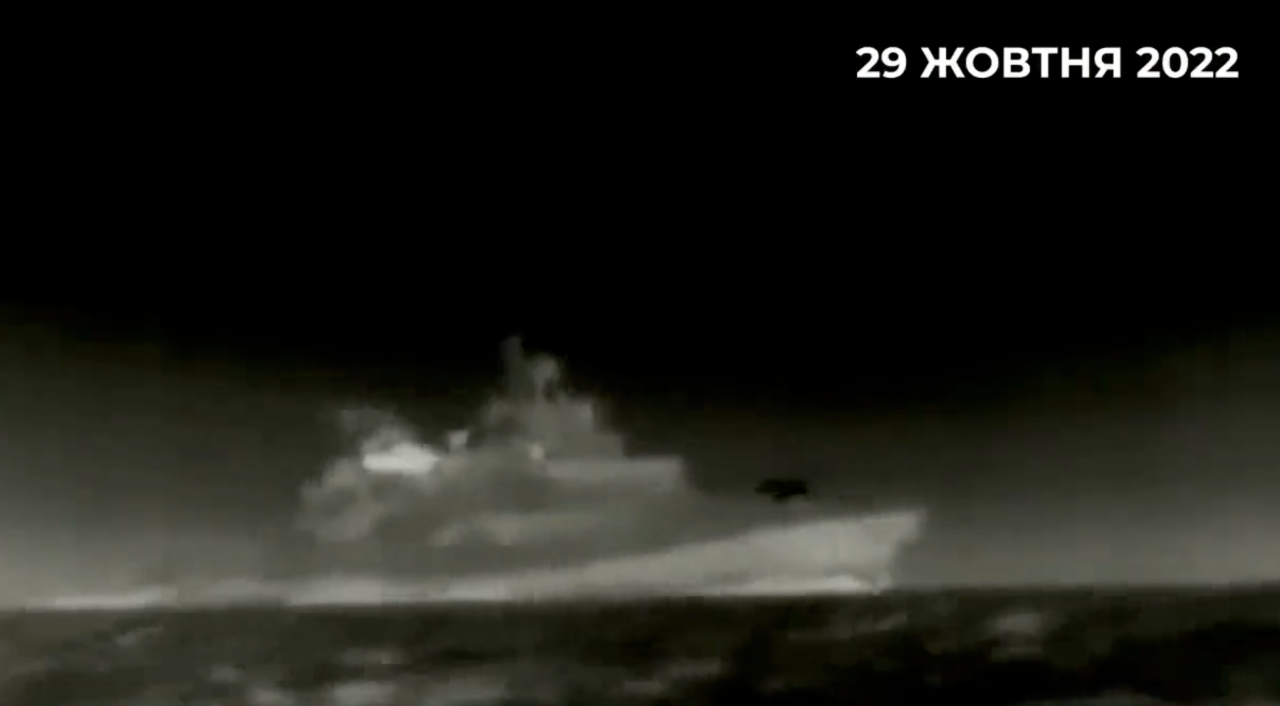
The use of sea drones in warfare raises complex legal and ethical questions, particularly concerning proportionality and distinction. The international community’s response has been varied, ranging from support to condemnation. Some nations have expressed concern about the potential for escalation or unintended consequences.
| Country | Response Type | Justification | Actions Taken |
|---|---|---|---|
| Example Country 1 | Support | Self-defense against aggression | Provided intelligence or technical assistance |
| Example Country 2 | Concern | Potential for escalation | Called for de-escalation and diplomatic solutions |
| Example Country 3 | Condemnation | Violation of international law | Imposed sanctions or restrictions |
| Example Country 4 | Neutral | Maintaining neutrality | No significant action taken |
Conclusive Thoughts
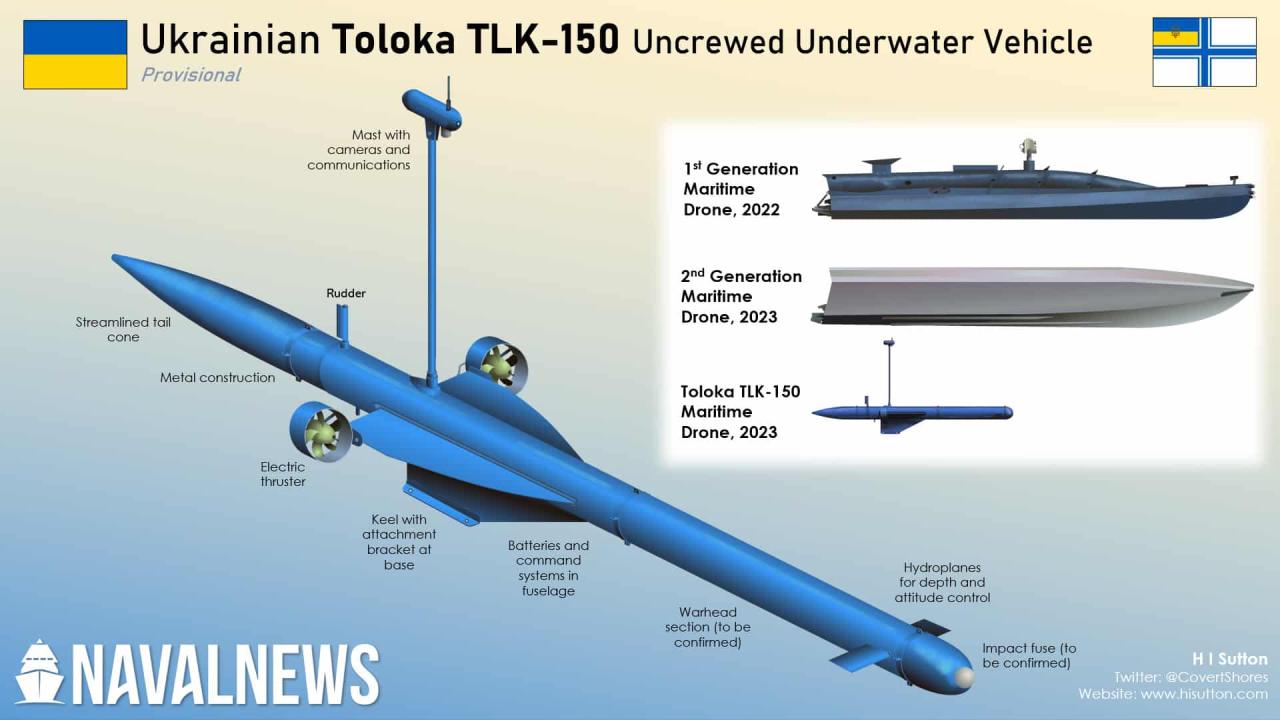
The emergence of Ukrainian sea drones represents a significant shift in naval power dynamics. Their effectiveness challenges traditional naval strategies and highlights the disruptive potential of low-cost, asymmetric warfare technologies. As drone technology continues to evolve, their role in future conflicts will likely become even more prominent, prompting further innovation and adaptation in naval defense strategies worldwide. The impact extends beyond the battlefield, raising complex legal and ethical questions about the future of maritime warfare.
Q&A: Ukrainian Sea Drone
How are Ukrainian sea drones powered?
Power sources vary depending on the drone’s size and mission, but common options include electric motors powered by batteries, or even small internal combustion engines.
What types of payloads can Ukrainian sea drones carry?
Payloads range from explosives for attacking ships to sensors for reconnaissance and surveillance. Some may carry combinations of both.
How are Ukrainian sea drones guided?
Guidance systems vary, but GPS, inertial navigation systems, and even pre-programmed routes are used. Some may also employ autonomous navigation and target acquisition systems.
What are the limitations of Ukrainian sea drones?
Limitations include vulnerability to countermeasures, limited range for some models, susceptibility to bad weather, and dependence on reliable communication links.
